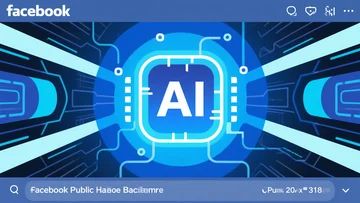Introduction: Defining AI Music in a Fast-Changing Digital Era
In a time when music can be composed with just a prompt or a click, it’s more important than ever to ask: What is considered AI music? Is it only music made entirely by machines? Or does music co-created with human input still count? The answer is more nuanced than it seems.
This article explores the definition of AI music, breaks down different categories of AI-generated sound, and clarifies what makes music “AI” in the eyes of musicians, platforms, and copyright law. Whether you’re a creator, listener, or someone exploring AI tools like Suno, Udio, or AIVA, this guide will give you a detailed understanding of what qualifies as AI music.

What Is Considered AI Music?
At its core, AI music refers to audio content that is composed, arranged, or generated with the assistance of artificial intelligence—either partially or entirely. This includes melodies, harmonies, lyrics, vocals, instrumentals, or even full productions.
The main qualifiers for AI music include:
Machine-generated composition: The melody, chords, or rhythm is created by an AI algorithm without direct human input.
AI-assisted songwriting: A human gives prompts, parameters, or seed ideas, and AI tools generate parts of the song.
AI voice synthesis: An artificial voice sings the lyrics, often using models trained on real vocal samples.
AI mastering/production: AI finalizes the track, adjusts EQ, balance, and compression without a human engineer.
If a track includes any of these elements, it may fall under the category of AI music—even if a human was involved.
Common Types of AI Music (With Real Examples)
Fully AI-Generated Music
Example: Suno AI allows users to generate entire songs—including lyrics, vocals, and instruments—based on a text prompt.
These tracks are machine-authored from beginning to end, sometimes with no human intervention besides the initial prompt.
AI-Generated Instrumentals with Human Vocals
Example: Using AIVA or Amper Music for background scores, but recording real vocals on top.
This hybrid format is common among indie creators who want fast instrumentals without sacrificing human emotion.
AI Voice Cloning and Singing
Example: Voicemod or kits like Synthesizer V clone celebrity voices or generate entirely synthetic vocals.
AI models synthesize lifelike vocals from written lyrics, bypassing the need for a singer.
AI-Enhanced Production
Example: LANDR and iZotope Ozone use AI for intelligent mastering.
Here, AI doesn’t create the music, but optimizes it for commercial-level sound quality.
Real-Time AI Music
Example: Flow Machines and Magenta by Google allow real-time co-creation.
Musicians “jam” with AI as it suggests chord changes or melodies.
Where Is the Line Between AI Music and Human Music?
This is where things get interesting.
If AI generates a melody and you play it on guitar, is that still AI music?
If you remix an AI-generated beat manually, is it hybrid music or your original work?
The answer depends on:
Level of AI involvement
How much creative control you had
Whether the music originated from a machine-learning process
In most legal and industry discussions, AI music is defined by its use of generative algorithms in at least one core component of the track—melody, harmony, lyrics, or performance.
Can You Copyright AI Music?
As of 2025, most countries—including the U.S. and EU—do not recognize AI-only music as eligible for copyright protection. Human authorship is generally required.
However, if you:
Provide the creative direction (e.g., prompting),
Modify the output substantially, or
Combine AI content with your original vocals or edits,
you may be able to claim copyright for the human-authored parts.
Platforms like YouTube and SoundCloud now require artists to disclose when AI is involved in music creation.
Why AI Music Matters in 2025
Over 60 million people used AI to generate music in 2024.
Tools like Udio, Suno, and Boomy are dominating TikTok and Reels soundtracks.
Even mainstream artists like Grimes, David Guetta, and Taryn Southern have used AI in production.
AI music isn't fringe—it's fast becoming mainstream.
Frequently Asked Questions
Q1: Is music made with Suno considered AI music?
Yes. Suno is an AI music generator that uses deep learning to produce entire songs based on prompts. It’s fully AI music.
Q2: What’s the difference between AI music and electronic music?
Electronic music uses synths and digital tools, but is created by humans. AI music involves machine learning systems making creative decisions.
Q3: Can I monetize AI music on YouTube or TikTok?
Yes, but platforms are increasingly requiring disclosure. You must also ensure the output is not infringing any existing copyrighted works.
Q4: Do I need a license to use AI music in my videos?
Many AI tools grant commercial licenses for Pro users (e.g., Udio and Boomy), but free plans may restrict usage. Always check the terms.
Q5: Are AI music tools free to use?
Some, like Suno (limited free credits), and Boomy (free tier), offer entry-level access. Premium features usually require payment.
Conclusion: Understanding What Counts as AI Music
AI music spans a wide spectrum—from fully machine-generated tracks to human-guided compositions using AI tools. What counts as AI music isn’t just about the final sound; it’s about how the music was made.
Whether you’re using AI to explore ideas, create viral tracks, or push musical boundaries, it's clear that AI isn’t replacing human creativity—it’s reshaping it.
As we move deeper into an era of generative creativity, knowing what is considered AI music will help you navigate questions of originality, ownership, and opportunity.
Learn more about AI MUSIC
